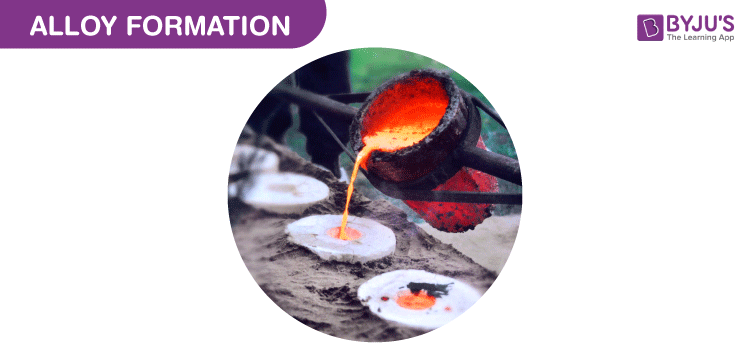Alloy Formation

A mixture of metals or a metal with another element is commonly known as an alloy. An alloy is defined by its metallic bond nature. It can be a solid solution of metals or a mixture of two or more metallic phases. We have inter-metallic compounds which are alloys that have a defined stoichiometry and structure. These alloys have a wide range of applications. The alloy formation actually reduces the cost of the material and preserves the desired properties of the metal. The combination of metals enhances the property of the constituent elements and provides corrosion resistance or mechanical strength. Brass, steel and duralumin are popular alloys used these days.
We measure the constituents of alloys by mass. Alloys are often classified as substitutional or interstitial alloys, depending on the arrangement of the atoms. They are further classified as homogeneous (which has a single phase) or heterogeneous (having two or more phases). Alloys are generally very hard and have high melting points. Steel and stainless steel are the alloys of iron along with metals such as chromium, tungsten, manganese etc.
The explanation for alloy formation
The atomic sizes of transition metals are very similar to each other and this attributes to their nature of forming alloys. As the atomic sizes are very similar, one metal can replace the other metal from its lattice and form a solid solution. This solid solution is known as an alloy. This is the reason why transition metals are miscible with one another in the molten state. When the molten solution cools, the corresponding alloy formation takes place.
There are different types of alloys which are prepared according to the required properties and the area of application. The important types and their uses are listed below:
- Bearing alloy – These are made in order to accommodate the high pressure when there is sliding contact with other bodies known as the rotating shafts of motors, generators or vehicles.
- Corrosion-resistant – We use noble metals in this case. These noble metals initially oxidise and act as a separation layer which prevents chemical action from any other metals. The alloys of aluminium serve as the best corrosion resistors.
We have seen the alloy formation characteristics of transition metals, the reason for this property and its applications. For any further queries, call the mentor support team at BYJU’S – The Learning App.’


Comments